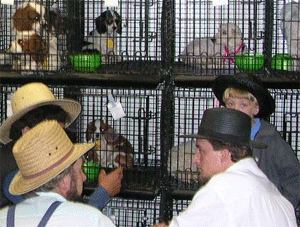The interplay between cultural traditions and legal frameworks often leads to intricate debates, especially when examining the practices of the Amish community concerning animal husbandry. The question of whether the Amish can be charged with animal cruelty emphasizes the necessity to navigate the fine line that separates cultural customs from ethical responsibilities. While the Amish are revered for their adherence to agrarian lifestyles and sustainable practices, scrutiny arises when the treatment of animals becomes a focal point of contention.
To understand this dilemma, it’s essential to explore the cultural tapestry that defines Amish life. With their profound commitment to simplicity and community, the Amish engage in farming methods that have endured for centuries. They cultivate not merely the land but also a way of life that cherishes tradition, self-sufficiency, and a deep-seated connection to nature. However, these traditional practices occasionally clash with contemporary understandings of animal welfare, creating a backdrop of tension.
Consider the metaphor of a delicate scale, with one side weighted down by cultural heritage and the other challenged by evolving societal standards. The Amish perspective often prioritizes functional farming and the utilitarian aspect of animals, which may inadvertently lead to practices seen as cruel by modern standards. For instance, confinement strategies and methods of breeding may be starkly different from the humane treatments advocated by animal welfare organizations. In this complex balance, the question emerges: when do traditional farming methods become animal cruelty?
Animal cruelty laws serve as societal parameters intended to protect animals from neglect and mistreatment. In the United States, laws vary significantly from state to state. Some states uphold stringent regulations safeguarding animal welfare, while others take a more lenient approach. In instances where the actions of the Amish intersect with these legal frameworks, confusion abounds. Enforcement agents may find themselves inadequately prepared to navigate the cultural nuances of the Amish way of life, leading to potential oversights or misinterpretations.
The root of the dilemma often lies within the practices of puppy mills, which are sometimes associated with Amish breeders. Puppy mills epitomize the conflict between profit-driven breeding operations and the ethical treatment of animals. Animals in such environments frequently endure unsanitary conditions, limited socialization, and insufficient veterinary care. While these instances highlight an area where animal cruelty can flourish, not all Amish breeders partake in these exploitative practices. Some uphold a commitment to ethical breeding, illustrating the spectrum of animal treatment within the community.
While it may seem straightforward to decry practices that neglect animals, it is critical to recognize the potential for misunderstanding cultural intentions. The Amish live by principles that may not entirely align with mainstream animal welfare rights, but they often view their animals as part of a reciprocal relationship. In their eyes, the well-being of animals ties to the notions of stewardship and responsibility. They may argue that their practices reflect a way of honoring the animal’s role within their lifestyle, even if such treatment appears harsh to outside observers.
Legal intervention, thus, presents a labyrinthine challenge. Courts must navigate the delicate waters where cultural values, ethical obligations, and legal restrictions converge. When accusations arise, the dilemma often takes the shape of a courtroom drama, where cultural expressions are pitted against the moral imperatives demanded by social progress. The ambiguity around cruelty charges against the Amish can lead to a broader conversation about the societal obligation to reconcile varying beliefs about animal welfare.
Engaging in dialogue with the Amish about animal treatment may yield more fruitful outcomes than outright legal confrontation. Education initiatives focusing on humane animal husbandry practices could foster a greater understanding that embraces both cultural nuances and modern ethical standards. Activists and reformers should strive to create spaces for constructive conversations where knowledge is shared, and common ground is established.
Furthermore, community involvement is paramount. An integrated approach allows for the foundational values of the Amish to intersect with contemporary animal rights views. By demonstrating respect for their traditions while advocating for more humane treatment, proponents of animal welfare can begin to bridge the chasm that separates these contrasting perspectives. This endeavor requires patience, empathy, and an acknowledgment of the rich tapestry that constitutes the Amish culture.
Ultimately, the framework through which we evaluate animal treatment within the Amish community must encompass a blend of legal scrutiny and cultural sensitivity. It prompts society to reflect on its own values, norms, and expectations concerning animal care. As these threads intertwine, we see an evolving narrative where tradition and progress may coexist, fostering an understanding that can lead to improved animal welfare without undermining cherished cultural practices. In this ongoing dialogue, the hope is to cultivate an environment where legal boundaries are respected, yet cultural identities are not marginalized. In doing so, the path towards a more humane future unfolds, rich with possibility and compassion.








